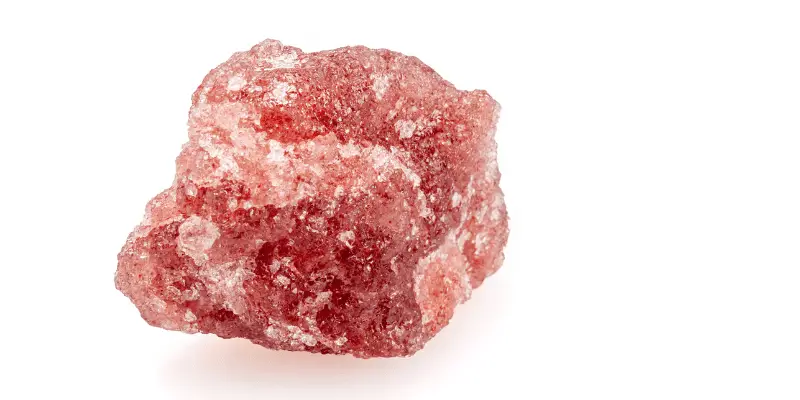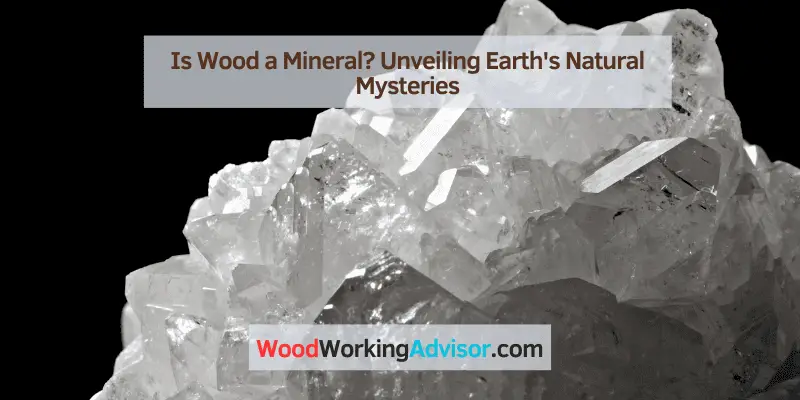Wood is not a mineral; it is an organic material composed mainly of cellulose and lignin. Minerals, by definition, are inorganic and have a definite chemical composition and crystalline structure.
Understanding the nature of different materials is vital for various industries, from construction to crafting. Wood, a versatile and renewable resource, comes from trees and other woody plants and plays a crucial role in environmental sustainability. Unlike minerals, which geologists classify based on specific chemical formulas and crystal lattice structures, wood is a composite of cells that grow and adapt to their surroundings.
The organic nature of wood distinguishes it from minerals, which arise from geological processes over millennia. Drawing this distinction is not just a matter of semantics—it has practical implications in fields such as material science, engineering, and environmental studies, where the properties of organic and inorganic substances directly influence their use and management.
Defining Minerals And Organic Matter
Minerals are defined by key characteristics such as a natural occurrence, an inorganic origin, a definite chemical composition, and a crystalline structure. These properties are the basis for classifying substances as minerals.
Contrary to minerals, wood is an organic material, primarily composed of cellulose, hemicellulose, and lignin. It does not exhibit a crystalline structure but rather a complex cellular composition.
| Property | Minerals | Wood |
|---|---|---|
| Natural occurrence | Yes | Yes |
| Origin | Inorganic | Organic |
| Chemical composition | Definite | Variable |
| Structure | Crystalline | Cellular |
From a scientific perspective, organic matter like wood is fundamentally different from minerals. It is derived from living organisms and undergoes decomposition and transformation over time, unlike the stability found in the mineral kingdom.
Composition Of Wood Explained
Wood is an organic material, fundamentally different from minerals due to its biological origin. It is composed of a variety of cells, each having a unique function contributing to the wood’s overall structure and characteristics. The primary cell type is the tracheid, which facilitates water movement and provides structural support.
On a chemical level, wood fibers contain cellulose, hemicellulose, and lignin, with cellulose being the main component responsible for strength and rigidity. These fibrous components are bound by lignin, which acts as a natural adhesive giving wood its rigidity and resistance to decay.
The growth process of wood begins within the growth rings of trees. Each ring corresponds to a year of growth, typically consisting of lighter spring wood and darker summer wood. This cycle contributes to the density and patterns observed in timber, reflecting the environmental conditions during its formation.
Geological Formation Of Minerals
Minerals have a very specific method of formation which involves certain environmental conditions. The process begins deep within the Earth’s crust or at its surface, where heat and pressure, or hydrothermal solutions, play a crucial role. Temperature fluctuations and the availability of chemical components, such as silicon and oxygen, lead to the creation of solid substances with definitive chemical compositions.
The crystalline structure is a distinctive feature of minerals and helps to classify them into various groups. This depends on the internal arrangement of atoms. Every mineral has a unique crystalline formation, and this allows them to be categorized systematically within the broader mineral classification system.
Rare minerals differ from common minerals not only in their scarcity but also in the specific conditions needed for their formation. While common minerals such as quartz or feldspar can be found abundantly within the Earth’s crust, rare minerals require unique settings, including very specific pressures or the presence of rare elements.

Understanding Wood’s Classification
Wood often triggers confusion regarding its classification; yet, botanically, it’s clear that wood does not meet the criteria of a mineral. By definition, minerals are inorganic solid substances with characteristic chemical composition and crystalline structure. Wood, on the other hand, is of organic origin, composed mainly of cellulose, hemicellulose, and lignin—components produced by trees and other woody plants through biological processes.
The characteristics of minerals are distinct and do not align with the nature of wood. A mineral must inherently be inorganic, which inherently excludes all plant matter, including wood, which is categorized as an organic compound. Minerals also exhibit a solid-state, a feature not applicable to wood, which can vary in its physical state due to environmental conditions like moisture.
From a regulatory and industry standpoint, wood adheres to a separate set of classifications and standards. Industries dealing with lumber, furniture, and construction materials regard wood based on its mechanical properties, grain, and workability, rather than the criteria applied to minerals. These practices highlight the practical approach taken by businesses and regulators, further cementing wood’s position outside the mineral category. Understanding these classifications is crucial for professionals in fields ranging from botany to materials science and woodworking.
Mineral-like Qualities In Petrified Wood
Petrified wood undergoes a fascinating transformation that endows it with mineral-like qualities. This process of wood petrification begins when wood becomes buried under sediment and is initially preserved due to a lack of oxygen. Over time, groundwater rich in minerals, typically silica, permeates the wood, and mineral deposits form as the organic material breaks down, a process called silicification. The cellular structure of the wood gets replaced with minerals, most commonly quartz, effectively turning the wood to stone while retaining the original wooden texture and shape.
Examining the characteristics of petrified wood, one finds that, unlike regular wood, it exhibits features such as hardness and density comparable to that of some minerals. Petrified wood can often display a range of vibrant colors, which are due to the presence of other trace minerals within its makeup.
| Petrified Wood | True Minerals |
|---|---|
| Hard and dense | Varied hardness, some are soft |
| Primarily composed of silica | Can consist of numerous minerals |
| Retains original structure of wood | Often has a crystalline structure |
| Forms from living matter | Generally inorganic in origin |
Implications For Collectors And Enthusiasts
Collecting petrified wood brings a unique aspect to the hobby of specimen gathering. Enthusiasts seek petrified wood for its distinct beauty and the fascinating process through which wood becomes mineralized. Typically, this involves a process known as permineralization, where minerals gradually fill in the cavities of decaying vegetal material.
The intersection of legal considerations and environmental concerns is paramount for collectors. Many regions implement strict regulations around the collection of petrified wood to prevent habitat destruction and loss of geological history. It is crucial for collectors to familiarize themselves with these regulations and obtain the necessary permits, ensuring that their hobby does not negatively impact the natural environments or contravene legal frameworks.
Preservation and significance of wood in geology cannot be overstated. Wood’s transformation into a stony replica represents a tangible link between organic life and the mineral world, providing insights into the ancient ecosystems and climates. Its preservation methods involve specific techniques to maintain the integrity and prevent deterioration, thereby preserving the wood’s scientific value for future generations.
Myths And Misconceptions Clarified
Wood is often thought of as a mineral due to its solid state and natural occurrence. This belief, unfortunately, stems from a fundamental misunderstanding of geological classifications. Wood originates as part of living trees, which technically classifies it as an organic material. In stark contrast, minerals are inorganic, naturally occurring crystalline compounds. They possess a definite chemical composition and a highly ordered atomic structure, characteristics that wood does not share.
It is essential to distinguish between organic and inorganic substances to prevent the spread of misinformation. While folklore and traditional views may romantically link wood to the earth’s minerals, scientific accuracy is paramount. Educating individuals on the difference helps promote a clearer understanding of natural classifications and encourages a deeper respect for geology and botany alike.
The Role Of Wood In Earth’s Ecosystem
Wood plays a pivotal role in Earth’s ecosystem, significantly influencing both habitat and biodiversity. As a natural resource, wood provides essential shelter and nutrients for a wide range of organisms. These organisms, from microscopic bacteria to large mammals, rely on wood for their survival, either as a habitat or as a source of food. The importance of wood extends beyond merely serving as a home; it is critical in fostering diverse ecosystems packed with various species.
The decomposition of wood plays a crucial role in the nutrient cycles that rejuvenate the soil, releasing valuable elements and minerals back into the earth. This process not only recycles nutrients but also helps regulate the carbon cycle, impacting the overall health of our planet. Additionally, wood’s interaction with mineral elements in soil can lead to enhanced soil structure and fertility, promoting plant growth and thus supporting flourishing ecosystems.
Examining Wood Through A Mineralogist’s Lens
Mineralogists often categorize substances based on specific characteristics such as composition, crystal structure, and physical properties. Wood, being an organic compound, does not fit the traditional definition of minerals, which are generally inorganic and have a crystalline structure. Minerals are typically formed through geological processes while wood is the product of biological growth.
The interface between mineralogy and biology is explored through biogenic minerals, which are produced by organisms. Even though wood is not a mineral, it can undergo mineralization, leading to the creation of petrified wood, which can be considered a mineralogical object due to the inorganic replacement of its original components.
Cross-disciplinary research bridges gaps between mineralogy and organic compounds like wood, providing a more integrative view of materials found in nature. This research often prompts reevaluation of the rigid classifications and encourages a more comprehensive understanding of the material’s scientific and practical applications.
Frequently Asked Questions On Is Wood A Mineral
Is Wood A Mineral Or Not?
No, wood is not a mineral; it is an organic material derived from trees. Minerals are inorganic and have a crystalline structure, which wood lacks.
Which Is Not A Mineral?
Coal is not a mineral because it derives from organic matter, specifically the remains of plants.
What Classifies As A Mineral?
A mineral is a naturally occurring, inorganic solid with a definite chemical composition and a crystalline structure. Minerals are typically formed through geological processes.
Is Snowflake A Mineral?
No, a snowflake is not a mineral. It is a form of ice, which is the solid state of water, and consists of frozen water molecules.
Conclusion
As we’ve explored, wood doesn’t fit neatly into the mineral category due to its organic origin and structure. Understanding the distinctive characteristics of minerals helps us appreciate the natural diversity of materials like wood. Embrace this knowledge next time you encounter the wonders of our planet’s resources.


